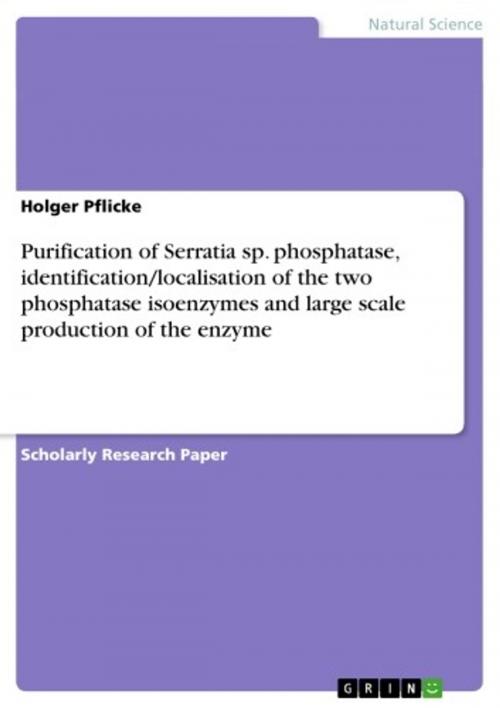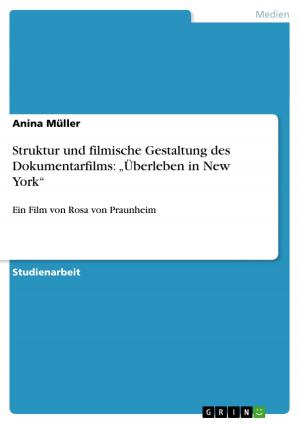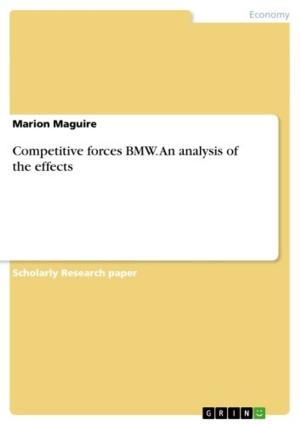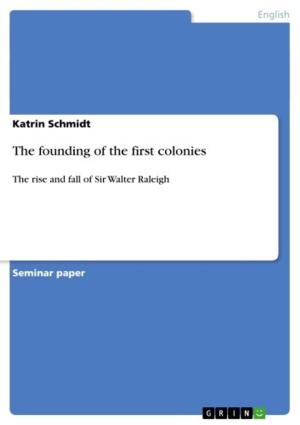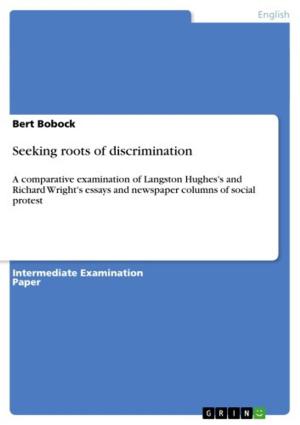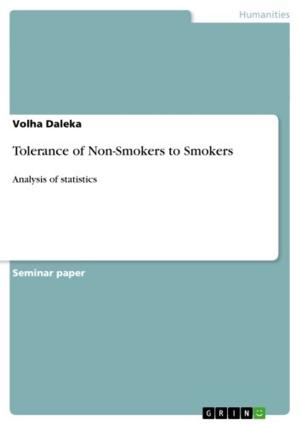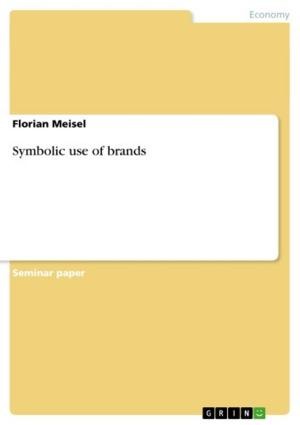Purification of Serratia sp. phosphatase, identification/localisation of the two phosphatase isoenzymes and large scale production of the enzyme
Nonfiction, Health & Well Being, Medical, Medical Science, Microbiology| Author: | Holger Pflicke | ISBN: | 9783638226516 |
| Publisher: | GRIN Publishing | Publication: | October 28, 2003 |
| Imprint: | GRIN Publishing | Language: | English |
| Author: | Holger Pflicke |
| ISBN: | 9783638226516 |
| Publisher: | GRIN Publishing |
| Publication: | October 28, 2003 |
| Imprint: | GRIN Publishing |
| Language: | English |
Research Paper (undergraduate) from the year 2003 in the subject Biology - Micro- and Molecular Biology, grade: 2 (B), Dresden Technical University (Institute for Nutrition and Biological Procedures), language: English, abstract: This study is part of the project 'Bioremediation of Nuclear Wastes by Biomineralization Processes' which uses an established biomineralization process (using Serratia sp.) for the removal of uranyl ions as hydrogen uranyl phosphate (HUP). HUP will be tested as a host crystal for intercalative ion exchange or co-crystallative removal of problematic nuclide fission products (FP) like 60Co, 90Sr and 137Cs using 'cold' isotopes in Birmingham in parallel to tests in Korea using real wastes. Metal uptake is mediated via a cell-bound phosphatase that liberates inorganic phosphate, which precipitates with heavy metals as cell-bound metal phosphate, thus depositing the uranyl phosphate 'host crystal' for the sequestration of the FP. The phosphatase is localised periplasmically and also within the extracellular polymeric matrix (EPM). Successful operation of the process depends on the correct localization of the enzyme into the extracellular matrix. It can be speculated that the periplasmic enzyme pool is a reservoir awaiting export and other studies have suggested the presence of two phosphatase isoenzymes, which differ in their chemical- and radiostability but are not yet assigned to either phosphatase pool or EPM since they are immunologically cross-reactive. The two phosphatases (designated CPI and CPII) are very similar but distinguished simply using cationic (CPII retained) and anionic (CPI retained) ion exchange resins. This study will concentrate on the production of phosphatase CPI and CPII which will be differentiated by enzyme partial purification (exocellularly-localised and residual whole-cell enzymes) followed by quantification of their cation exchange (CPII) and anion exchange (CPI) resin binding. Large scale biomass preparation for bulk enzyme production for enzyme structural studies (X ray crystallography using the Korean Synchrotron Facility) will use the 600 L facility in the pilot plant in the School of Chemical Engineering University of Birmingham. The overall objective of the project is to promote the localisation of the more radiostable isoenzyme (CPI) into the exocellular matrix for maximum production of uranyl phosphate in the presence of the high-active nuclide fission products and to understand this radiostability in terms of the associated water in the active site pocket of this novel phosphohydrolase.
Research Paper (undergraduate) from the year 2003 in the subject Biology - Micro- and Molecular Biology, grade: 2 (B), Dresden Technical University (Institute for Nutrition and Biological Procedures), language: English, abstract: This study is part of the project 'Bioremediation of Nuclear Wastes by Biomineralization Processes' which uses an established biomineralization process (using Serratia sp.) for the removal of uranyl ions as hydrogen uranyl phosphate (HUP). HUP will be tested as a host crystal for intercalative ion exchange or co-crystallative removal of problematic nuclide fission products (FP) like 60Co, 90Sr and 137Cs using 'cold' isotopes in Birmingham in parallel to tests in Korea using real wastes. Metal uptake is mediated via a cell-bound phosphatase that liberates inorganic phosphate, which precipitates with heavy metals as cell-bound metal phosphate, thus depositing the uranyl phosphate 'host crystal' for the sequestration of the FP. The phosphatase is localised periplasmically and also within the extracellular polymeric matrix (EPM). Successful operation of the process depends on the correct localization of the enzyme into the extracellular matrix. It can be speculated that the periplasmic enzyme pool is a reservoir awaiting export and other studies have suggested the presence of two phosphatase isoenzymes, which differ in their chemical- and radiostability but are not yet assigned to either phosphatase pool or EPM since they are immunologically cross-reactive. The two phosphatases (designated CPI and CPII) are very similar but distinguished simply using cationic (CPII retained) and anionic (CPI retained) ion exchange resins. This study will concentrate on the production of phosphatase CPI and CPII which will be differentiated by enzyme partial purification (exocellularly-localised and residual whole-cell enzymes) followed by quantification of their cation exchange (CPII) and anion exchange (CPI) resin binding. Large scale biomass preparation for bulk enzyme production for enzyme structural studies (X ray crystallography using the Korean Synchrotron Facility) will use the 600 L facility in the pilot plant in the School of Chemical Engineering University of Birmingham. The overall objective of the project is to promote the localisation of the more radiostable isoenzyme (CPI) into the exocellular matrix for maximum production of uranyl phosphate in the presence of the high-active nuclide fission products and to understand this radiostability in terms of the associated water in the active site pocket of this novel phosphohydrolase.
